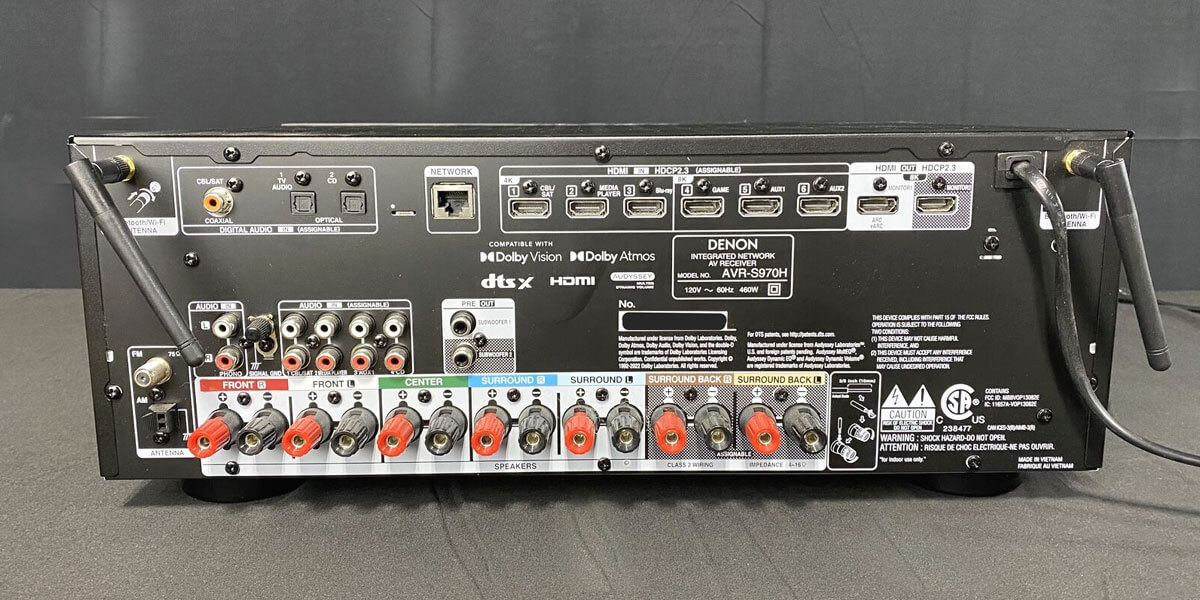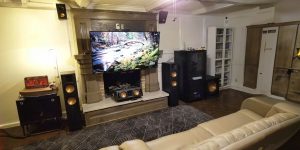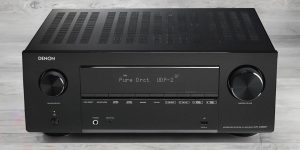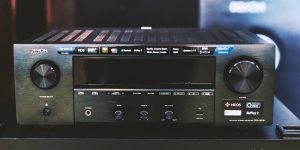Before you buy your first receiver or upgrade an outdated model, the first question you will probably ask yourself is, “What do channels mean on a receiver?”. Although this is one of the most important questions when building an optimal home theater system, not everyone can answer it instantly. Most people don’t understand what channelization means and don’t know how many channels are necessary or enough for them. This article aims to educate you on channel configuration. Let’s go!
Understanding channels: 2.0, 5.2, and 7.1.4
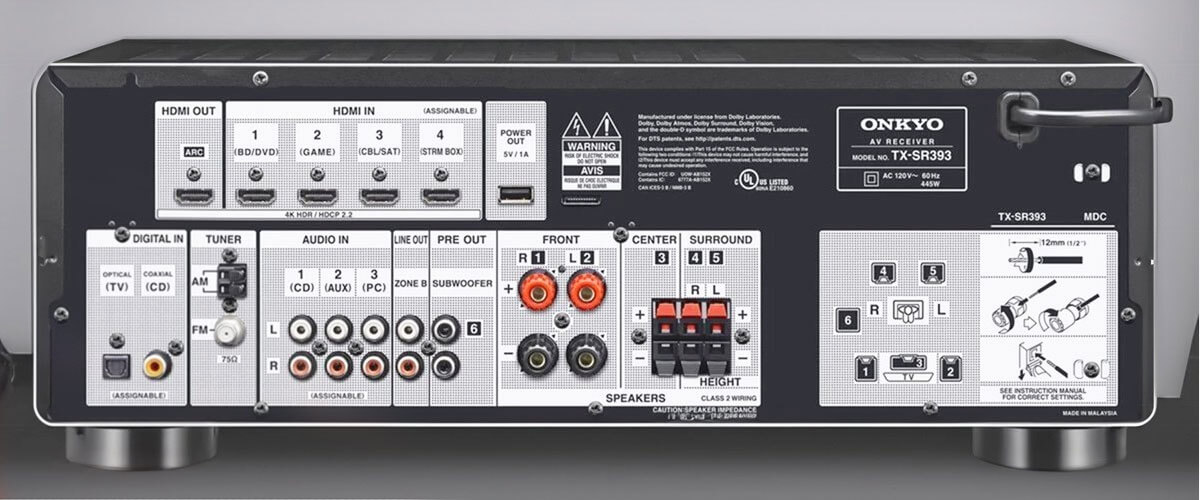
To understand the “complexities” of the configuration, let’s first understand what these mysterious numbers in the names of receiver models mean. Yes, they indicate the number of channels, but not only. Looking at them, you can immediately understand what your future system is capable of because the first figure is the number of main receiver channels, the second – is the number of subwoofers, and the third – is a bonus in the form of height channels.
But it’s always easier to understand with a concrete example, so a 2.0 system assumes you can only create a stereo system; 5.2 consists of a center, front, and side left and right speakers with the addition of two subs; and 7.1.4 is a more complex system of 7 floor and side speakers, 1 subwoofer and 4 ceiling speakers.
Stereo: the world of 2.0 and 2.1 channel systems
The simplest 2.0 system consists of just two speakers. But the most advanced audiophile will never want more than that because, for music, it’s more than enough.
Although, in a 2.1 configuration, you can get more. Who doesn’t love bass, without which music sounds dull and flat?
With this system, you can also significantly improve the sound experience of your TV.
It’s worth noting that these systems usually just use an amplifier rather than a receiver. And I’d say you’ll save money that way, but a professional amplifier can be very expensive. Stereo receivers, on the other hand, are good for those on a tight budget.
Multichannel: exploring 5, 7, 9, and beyond channel systems
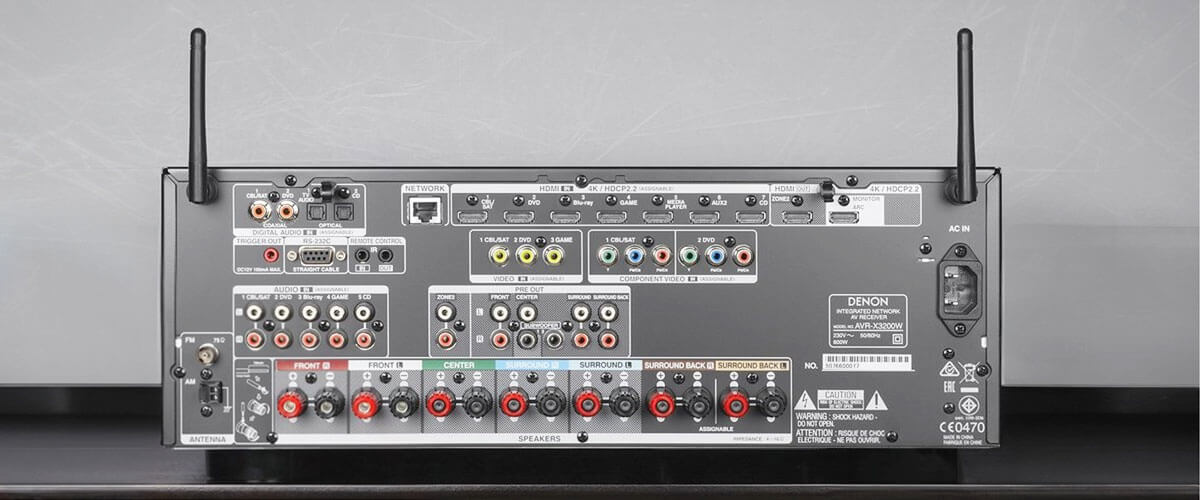
Selecting a surround sound receiver will depend on several factors, such as budget, room size, number of speakers, and additional modern features. And for a more vivid understanding, I will analyze the most common 5.1, 7.1, and 9.1 systems.
Navigating 5-Channel Receivers
Study what a 5-channel system consists of; the rest will seem like you’ve known it all along. So front left, center, front right, front left, back left, and back right is a minimal surround sound configuration where each member does a specific job:
One center channel – dialog;
Two side speakers – music;
Two rear speakers – the actual 3D sound effect.
These are simple, low-power systems (50-80W per channel) suitable for small spaces and generally inexpensive.
Embracing 7-Channel Receivers
The 7.1 system is all of the above, plus the two rear speakers (also left and right). These are the ones that create the deeper surround sound picture. And if you hang the two rear speakers from the ceiling, creating a 5.1.2 configuration, you can enjoy immersive formats like Dolby Atmos and DTS:X. However, more channels are required to enjoy these modern advances in surround sound fully.
These systems are slightly more powerful (80-100W per channel) and are designed to fit in rooms of about 300 square feet.
Beyond 9 Channels
If you have money to spare, a large house with a room for watching movies with the whole family, you are not afraid to chisel the ceiling just to place the speakers there, as well as a huge amount of wires, have strong eardrums, and you like to physically feel the sound (shaking chair under you, rattling windows), then it is worth considering systems from 9 channels and above.
You can build systems 7.1.2, 7.1.4, 9.1.4, or whatever you want because you will participate in events with the additional upper channels, not just watch them. All the variety of soundtracks of today’s content will be laid out with such nuance and as powerfully as in a real movie theater, or even better.
FAQ
Do I have to use all channels in a receiver?
No, you don’t. It depends on your audio system and preferences. If your receiver supports more channels than you have speakers, you can leave the unused channels unconnected.
How many channels are needed for Atmos?
Dolby Atmos typically involves configurations with additional height channels, which are needed to distribute sounds to the ceiling, immersing you literally inside the action on the screen. The minimum configuration for this effect is a 5.1.2 system, which means five main speakers, one subwoofer, and two height (ceiling) speakers. More advanced systems can include configurations up to 7.1.4 and even 9.1.6. The choice depends on the size of the room, the equipment, and the level of sonic immersion desired.
Is 5.1 or 7.1 surround sound better?
The concept of “better” is subjective. So the choice between 5.1 and 7.1 surround sound depends on your preferences, room layout, and the content you consume. A 5.1 system has five main speakers and one subwoofer, while a 7.1 system adds two rear speakers for more surround sound. Yes, 7.1 will sound more rich compared to 5.1. Sound effects will not only be in front of and above you but even behind you.
But these systems are necessary if you have a medium-sized room (about 300 square feet) and want access to the content with Dolby Atmos. In smaller rooms, the difference won’t be noticeable.

